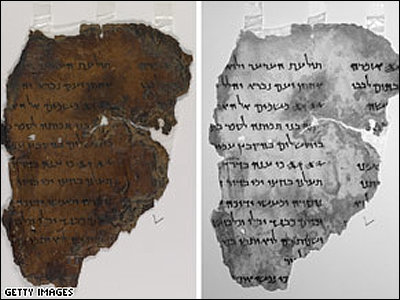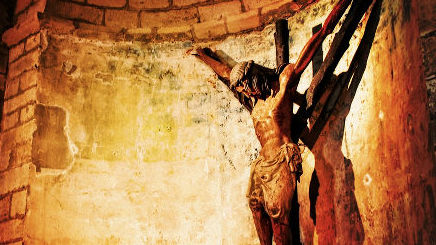Discovered the document of 1,300 years ago from book bindings made in modern times, succeeded in decoding characters

It was discovered that manuscripts written in medieval were used as reinforcing paper inside the back cover and cover of books made in the 16th century in Europe. By research using the latest X-ray analysis technology, we succeeded in reading the letters written on the manuscript without cutting the old book.
X-Rays Expose a Hidden Medieval Library | medievalbooks
https://medievalbooks.nl/2015/12/18/x-rays-expose-a-hidden-medieval-library/
X-rays reveal 1,300-year-old writings inside later bookbindings | Books | The Guardian
https://www.theguardian.com/books/2016/jun/04/x-rays-reveal-medieval-manuscripts
The use of medieval manuscripts in bindings of old books of the modern era was found by research of an old book in which bindings have been damaged so far.

However, since most of the manuscripts are hidden inside the bindings, we can not see the entire manuscript as far as glance at the old books is concerned. Also, in the case of an old book in which the binding remains in beauty, in order to see the inside of the binding it is necessary to cut the book and hurt the valuable old book.

So a group of scientists and scholars in the Netherlands decided to decipher the manuscripts hidden inside without cutting the book by using macro x-ray fluorescence spectrometry (MA-XRF) I tried. In the research, using the special X-ray analysis equipment developed by Professor Joris Dik of Delft University of Technology in the Netherlands, scans the inside without hurting the old book.

I found that letters overlapped and hidden inside the back cover of the old book made in the 16th century. Furthermore, composition analysis of the ink was carried out, and from the ratio of iron, copper and zinc, it was found out that it is a piece of medieval manuscript inside the spine. In other words, the manuscripts written in the Middle Ages are being recycled in the later world, which means that in order to make the book binding thicker and stronger, the cut manuscripts were pasted together in many layers.

Macrofluorescent X-ray analysis found manuscripts that were supposed to be written in the 15th century, clergy of the eighth century England clergy and Christian clergyVeda Vene RabilisA 12th century manuscript including excerpts of the document left by the bead (Bead), etc. has been found in a total of 5 books. Researchers have also succeeded in accurately reading letters by separating the three pages pasted with glue from the data obtained by macro fluorescent X-ray analysis into separate data.

Dr. Erik Kwakkel, a historian studying medieval books at the Leiden University in the Netherlands, says, "This discovery is a valuable discovery similar to reserves, which is very exciting." According to Dr. Kwakkel, most of the manuscripts found were written from the 14th century to the 15th century, but before the 9th centuryCarolingian morningI also found things of the era. Among the manuscripts discovered, the most important thing is that it is a very old Biblical manuscript.
Also, thousands of books and contemporary books used in this research are stored in the British Library, the Oxford University Bodle Library, and others. Therefore, starting with this discovery, there is a high possibility of finding new facts to harness the history of the past. Research was conducted by the Royal Academy of Arts and Sciences of the NetherlandsYoung AcademyWe will receive further subsidies and will continue in the future. However, it takes time to analyze more than 24 hours in one analysis, so faster analysis techniques are required.
Other analytical techniques similar to macro fluorescent X-ray analysis exist. For example in ItalyVesuvius VolcanoThe papyrus scroll found from the volcanic ash erupted before 2000 years was burned out black as shown in the picture below, but in 2015 X - ray technology was used to change the inner character without destroying the shape of the scroll To decipherSucceeded. However, Dr. Dik says, "Compared to papyrus, parchment used in medieval books is much thicker and hard to pass through," it seems difficult to use papyrus's analytical techniques for analyzing old books .

Related Posts:
in Note, Posted by darkhorse_log







